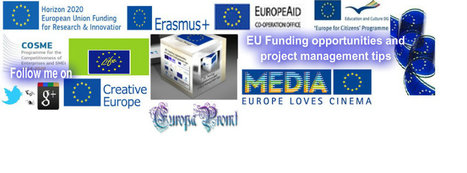
The Financial Guidelines have been prepared to help coordinators and beneficiaries (hereafter referred to as “the beneficiaries”) to understand the financial provisions of the grant agreements awarded and signed following the Call for Proposals related to the COSME Programme (2014-2020). Beneficiaries should read the guidelines carefully together with their signed grant agreement and its general terms and conditions.



 Your new post is loading...
Your new post is loading...







The purpose of this document is to help beneficiaries understand and interpret the financial and legal provisions of the grant agreement (GA) they have signed. To this end, the text in the Financial Guidelines seeks to explain the definition of the technical vocabulary used whilst providing the reader with practical advices.
This guide concentrates mainly on the different aspects of costs incurred during the action of the GA, types of costs, i.e. eligible versus ineligible costs, and the different eligible cost categories, whilst providing explanation for each of the aspects mentioned above. The objective is to provide the beneficiaries with a reference to the different situations that may arise when dealing with costs allocation.
More information here:
http://bit.ly/2BHdCIK